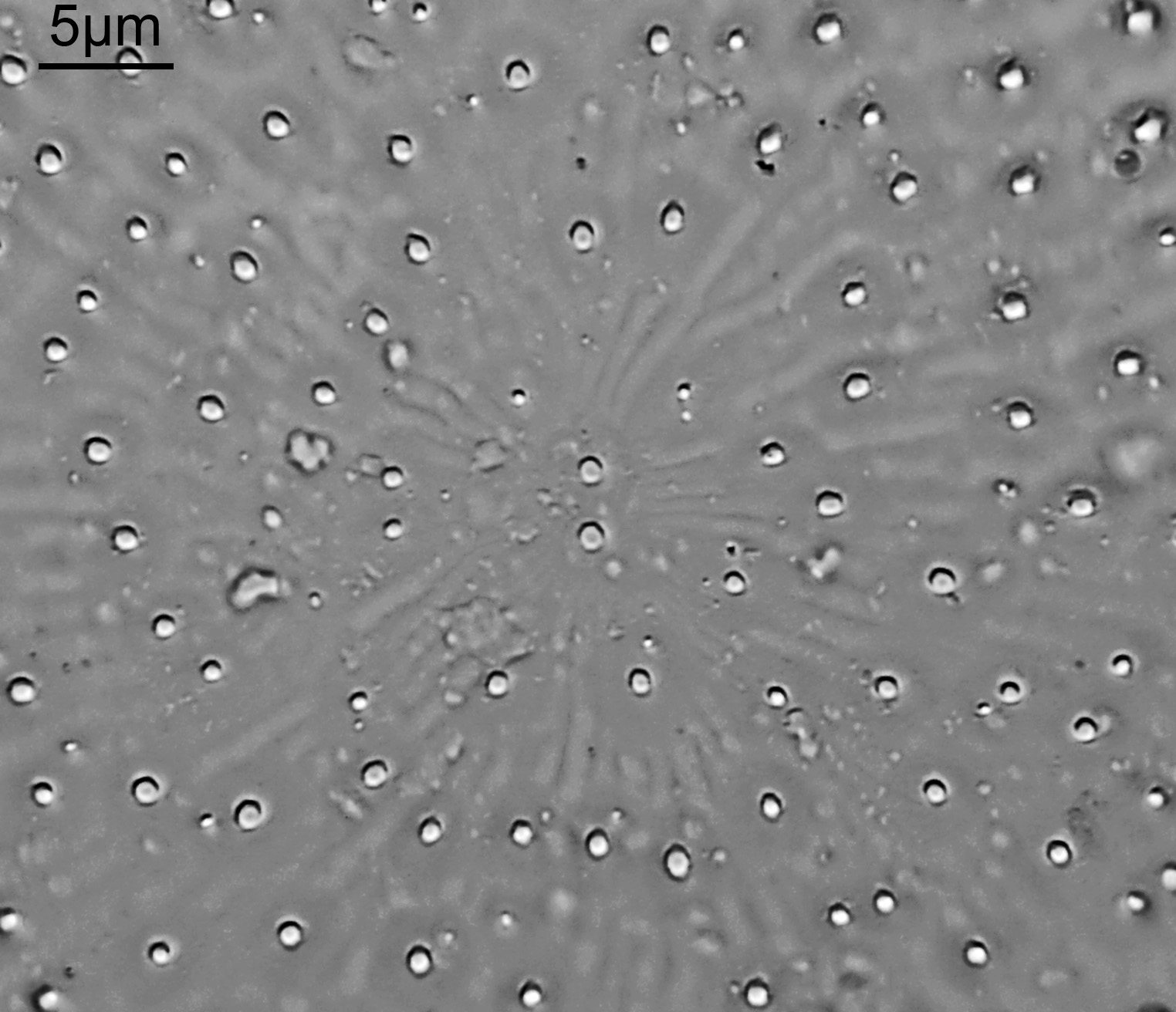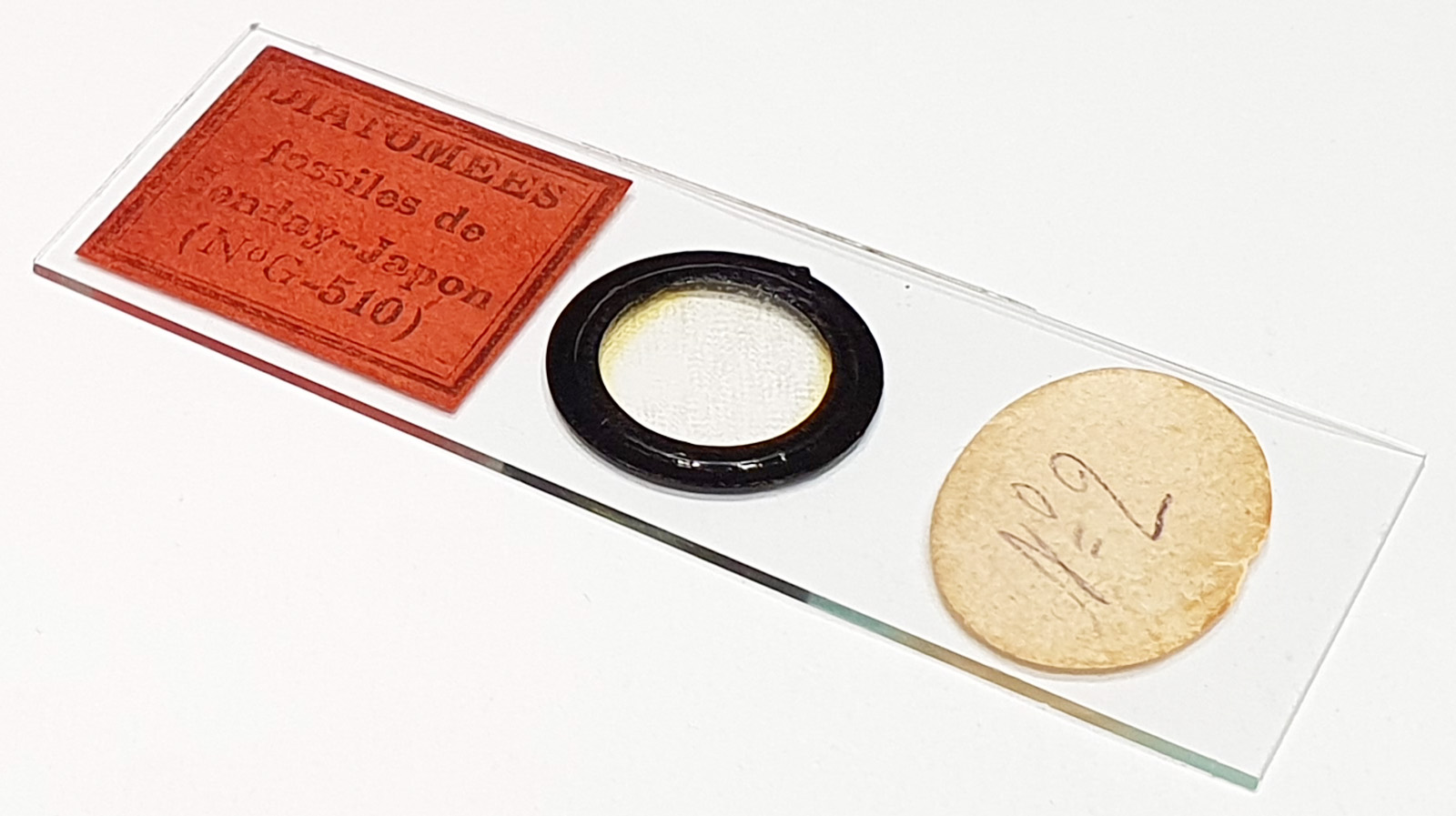




A strew slide from Sendai, Japan (described as Senday-Japon on the slide). No makers name. Mainly Coscinodiscus sp., some Arachnodiscus sp., Stephanopyxis sp., one Isthmia sp., and a fewTriceratium sp.. There was one striking diatom, an example of what I am fairly sure is Entogoniopsis balanifera. More on the naming of this in a minute. Olympus BHB microscope using 450nm LED light. 40x Leitz Pl Apo NA 1.00 objective, oil immersion. Olympus Aplanat Achromat condenser, oil immersion, oblique lighting. 2.5x Nikon CF PL photoeyepiece. Monochrome converted Nikon d850 camera. 59 images stacked in Zerene (Pmax).
Back to the name. As mentioned above I think this is Entogoniopsis balanifera. The original name for this was Triceratium balaniferum. It is shown in Schmidt’s Atlas on Plate 159, Figure 1, with the characteristic faint radial pattern from the central point. This is barely visible in the stacked image, but a bit more obvious if you look at a single frame and boost the contrast a bit. T. balaniferum is also mentioned in Brun & Tempére (1889, Mémoires de la Société de Physique et d’Histoire Naturelle de Genève 30: 59, pl. VI, fig. 4. A Google translate translation what they say about it is given below;
“TRICERATIUM BALANIFERUM Temp. and Brun.
PI. VI, fig. 4. Rare.
This beautiful species is well characterized by the prominent rings of its angles [I presume this is describing the circles in the apices?]. Diameter 200 to 260µm. Flat surface furnished with cloudy grooves radiate or pearl exactly as in Stictodiscus Eulensteinii Grun (A. S. 75. 7). This aspect is perfectly rendered by photograph 5. 22. Truan and Witt (Jeremie). Flanks of the valve with a row of pearls (Very short ribs). High capitula, provided with conical pearls at their base and striations towards their ends.
Sendai limestone.
Note:
This singular type shows how difficult it is to give the limiting characters of a species and to fix exactly the framework of a genus among the Diatoms; for with its ring-shaped ends (truncated horns) and its striated extremities, this species offers at the same time the characters of the genus Odontella and of the genus Biddulphia as defined by Grunow (Fr. Jos. land. page 5). In what has been drawn, there is hardly anything analogous with it except Tr. microstictum Grev. (1864. T. M. C. 8. 17). We have found a form provided at its angles, not with rings, but with rounded and strongly punctuated capitula. These capitula form a high cone, provided with a central and round lumen. All the rest of the F. V. is identical to the balaniferum. — Is this a variety or another species? — Or is this a double valve opposed and dissimilar as in certain fossil Triceratiums? (see the note relating to Tric. radiatum Brigth. page 62).”
When I first imaged my copy, I saw the small circles on the three apices, and thought these might be due to a problem with the mounting. Brun & Tempére saw features there too, but they illustrated them looking larger and more prominent than on mine.